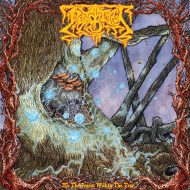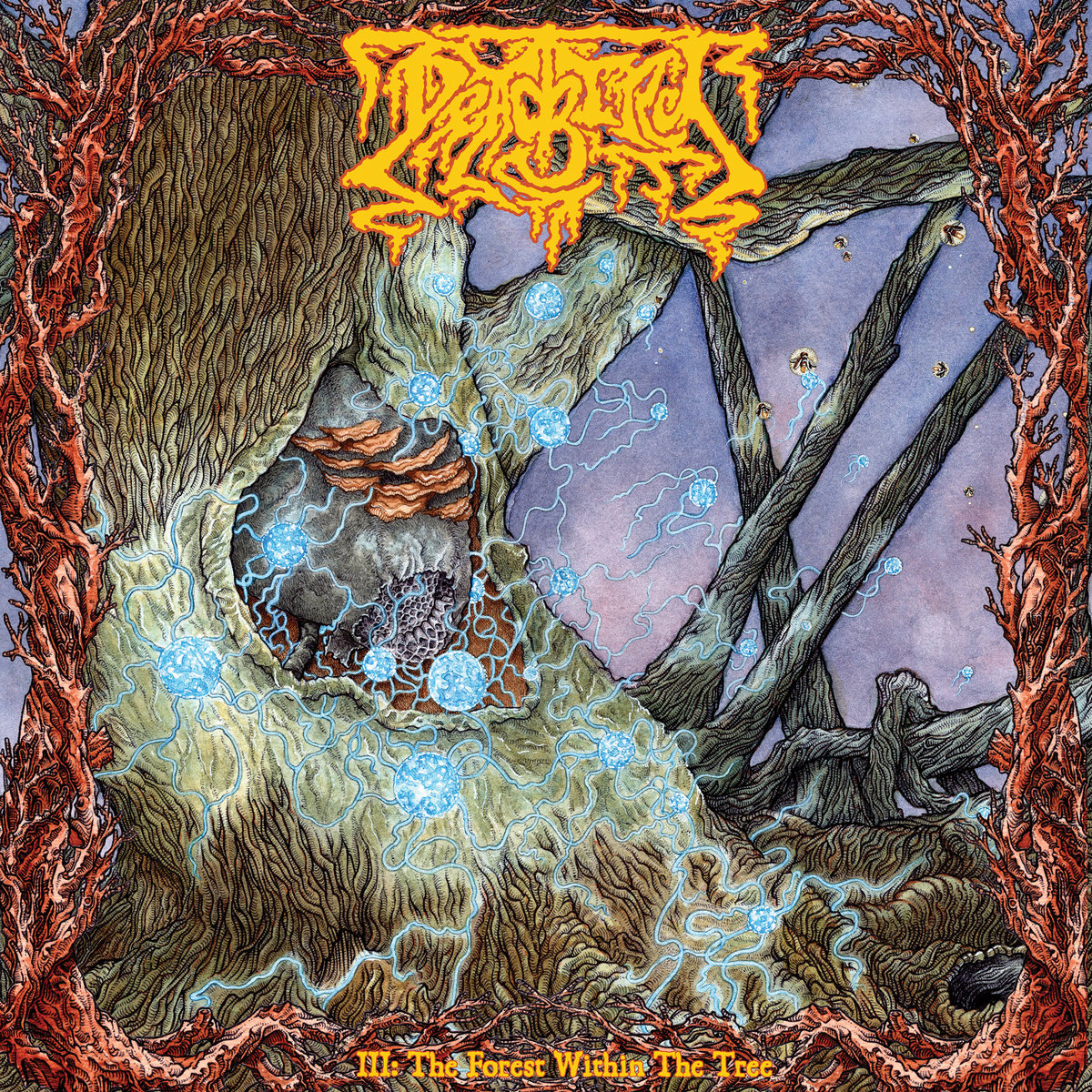 All that I have read, seen and heard recently about the American South has been synonymous with weird, backward ideas (to put it politely). It looks like the majority of the people there is trying very hard to undo some of the achievements of civilization. Little Rock, Arkansas, however, seems to be a little (blue), progressive island in a (red) sea of backwardness (Yes, I actually checked). The excellence of Deadbird and their new album appears to be just another proof for how weird mainstream culture breeds great subculture.
All that I have read, seen and heard recently about the American South has been synonymous with weird, backward ideas (to put it politely). It looks like the majority of the people there is trying very hard to undo some of the achievements of civilization. Little Rock, Arkansas, however, seems to be a little (blue), progressive island in a (red) sea of backwardness (Yes, I actually checked). The excellence of Deadbird and their new album appears to be just another proof for how weird mainstream culture breeds great subculture.
I don’t think me and Deadbird would have crossed paths if I weren’t writing reviews. Even if I had seen the album reviewed somewhere, the indecipherable logo that looks like spread out intestines and the cover drawing of a decaying forest would not have appealed to me. Neither would the band photo of sombre-looking, middle-aged men. Yet, The Forest Within the Tree completely blew my mind. But let’s start at the beginning.
Established in 2002 and revolving around brothers Chuck (guitar) and Phillip Schaaf (drums) Deadbird, to date, have released two albums The Head and the Heart (2003) and Twilight Ritual (2008). The Forest Within the Tree is their third album and their first release in ten years. The first two albums with their “slow southern death sludge” had earned the band somewhat of a cult status among genre lovers. While 10 years of absence might have bleached that status, listening to their new material I must say that they probably deserve it. The Forest Within the Tree is nothing short of amazing.
The album’s subject, as evident in the title and the cover drawing, is the concept of microcosm – something, no matter how small, encapsulates in miniature the characteristics of something much larger: the microorganisms inhabiting a decaying tree allow you to draw conclusions about the state of the forest and vice versa; the defects of our families and societies are visible and evident in every individual and also the other way around. The cover design (by John Santos) features a colourful, and therefore to some extent beautiful, image of a post-apocalyptic forest, partly burned down and rotting, but still teaming with some forms of life. In a dead tree, fungi are growing out of a wasps’ nest. The wasps’ nest itself resembles a cancerous growth, insects are flying around, as are what looks like balled up energy, enlarged images of atoms, spores or new life forms. The whole scenery is framed by something like twines, but, having a reddish colour, they could also be blood vessels. The band logo, placed atop of this scenery, is pukey yellow. The conclusion I would draw from all of this is that while humanity may die, life will go on in some form or other. It might not be pretty, but it is still life.
So, what does this sound like put to music? Whiney and depressed? No. It sounds absolutely incredible: grandiose and gritty. That’s because this heart-wrenching state of affairs is faced head-on and with composure. The album’s soundscapes range from acoustic guitar playing accompanied by clear vocals to mighty, epic metal with throaty singing. A mixture of Neurosis, Alice in Chains and Johnny Cash. Remember the Johnny Cash cover of the Nine Inch Nails song Hurt? That’s the deep sadness and simultaneous composure and greatness I’m talking about. And he might well have been an inspiration, because he’s from Arkansas, too.
The Forest Within the Tree opens with The Singularity. “Singularity” can mean a lot of things, but let’s say it’s a unique event that changes everything. The first thing you hear are eerie background noises, like wind, or a storm maybe. Then the guitar sets in, playing a melancholy melody. The clear vocals intensify the mood. Later on, something like the sound of whirring helicopter blades can be heard. After this rather quiet intro, Luciferous Heart hits you with everything the band’s got: massive sound à la Neurosis, with lots of variation. Heyday continues in a similar manner, but sounding a bit more like Alice in Chains, and having more of an epic character. Next is Alexandria, my favourite. Three minutes of excellent heavy music. The drumming is in sync with the outstanding vocals. These vocals would make any Viking band jealous. You can hear someone singing from the depth of his being. Fantastic. 11:34 (yes, that’s the name of the track) brings us to the eerie atmosphere of the post-apocalyptic forest from the cover. I hear the sound of crickets and again the whirring helicopter blades. A guitar is playing suspenseful riffs, as if something is about to happen, or as if someone is brooding about something, then another guitar is added and the brooding stops. Brought Low slowly builds up into a monstrous sound with screamed vocals, featuring great guitar riffs. Bone & Ash pays tribute to hardcore and punk. The Ending brings us back to the forest again. But this time, the atmosphere is different: everything is backwards. The recording of the acoustic guitar from the beginning is being played backwards. There are other sounds, too, but you can no longer be sure whether they are meant to be insects or machines. They sound alien and weird, but even this dystopian soundscape has its beauty. Fadeout.
You know, sometimes this review writing, though a beloved hobby, is just another thing among a lot of things I have to do. Sometimes my mind is so busy with its own content that it’s an effort to process the product of someone else’s mind, especially if I don’t warm all that much to the music. But with music I like, it’s the other way around. My mind fills with the music and the thoughts I have about it, and I forget everything else.
In my opinion, there is not a single tone amiss on this record. Everything is aligned, everything fits together. Everything makes sense. It is honest and authentic, without any showiness. It really deserves the top score. Thank you for the music, Deadbird.
Should you, however, turn out to be Trump supporters, I will have to rethink every word that I said.
(10/10 Slavica)
https://www.facebook.com/Deadbird1332
https://listen.20buckspin.com/album/iii-the-forest-within-the-tree

11/10/2018 at 10:24 pm
Hey! Deadbird Alan here. First- thanks for the listen and high praise (Johnny Cash! Wow!), as well as the thoughtful words. No one yet has so concisely captured our thought process in the concepts behind naming and visually representing this record. We spent many a conversation within the band, as well as with Santos, the artist, philosophizing around to be sure all of our thoughts “rhymed.” It means a lot that you were able to perceive this, and write about it. It feels “communicated.” (We actually all were tripping out about it today in a group text!).
Secondly, and, the main reason I felt compelled to speak for the group here, which I feel confident in doing on this subject: Deadbird, both collectively, and individually, are absolutely opposed to the facisim , racism, and misogyny displayed and empowered by the current US regime. I hope our music and art inspires others on a spiritual and personal level in opposition to this type of authority everywhere it reaches. Hopefully it connects on many other personal levels of inspiration, as well.
Thanks again for the listen and the thoughtful words.
a.
12/10/2018 at 9:24 am
You are most welcome, guys. You deserve the praise, now even more so. Thanks for reaching out. I’m glad you cleared that up. And let me assure you that the album does indeed communicate even more. But there’s only so much you can mention in a review without it turning into a PhD thesis. I know, for example, that it’s about midlife, too, and I can relate. Having called the South “a red sea of backwardness”, I think that it would be fair to tell you that the album’s attitude also reveals something positive connected to the South: Southern Pride. And I don’t mean the misguided, delusional kind, but honest, noble spirit in dealing with something you can’t change. All the best to you, S.